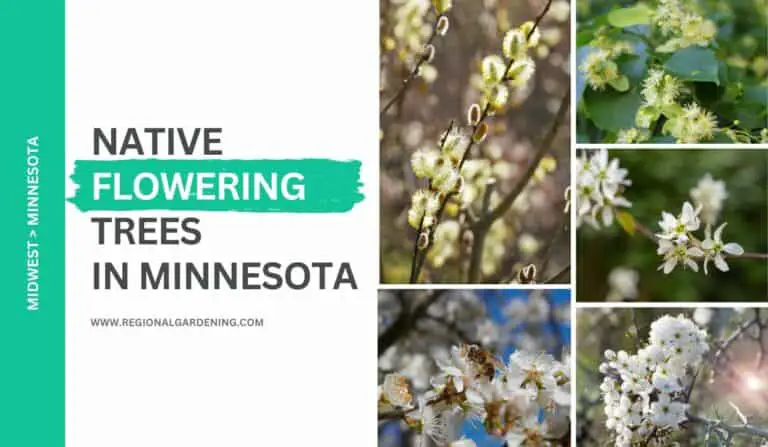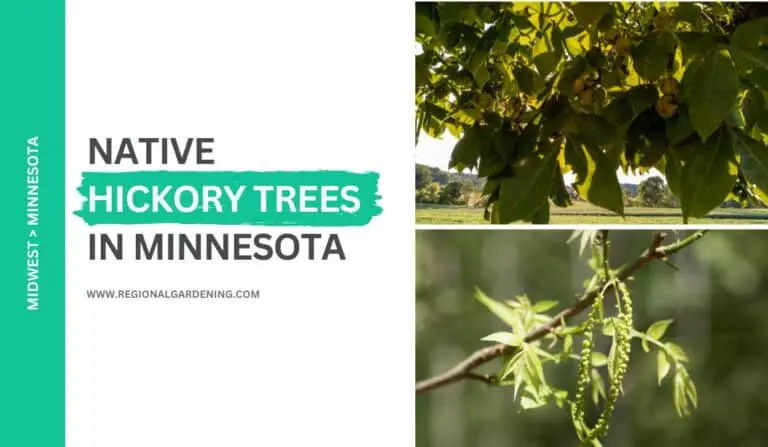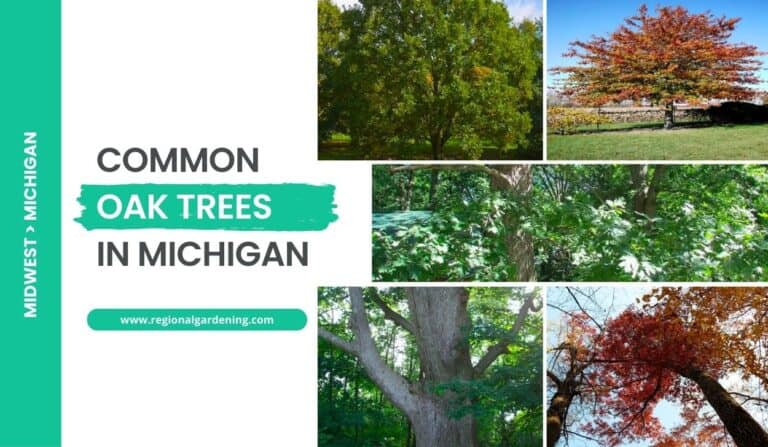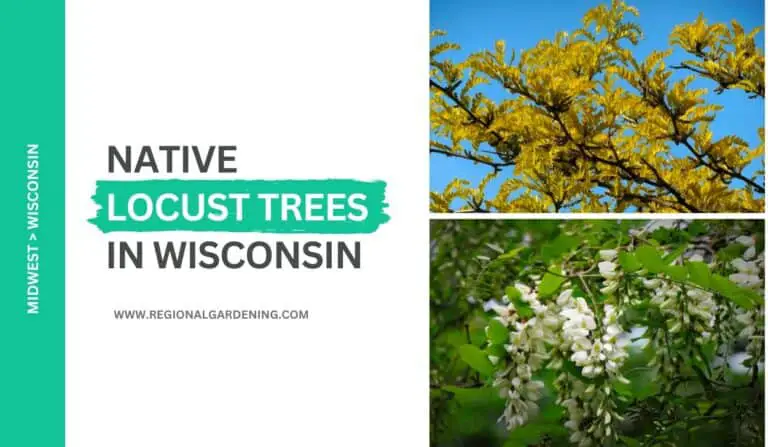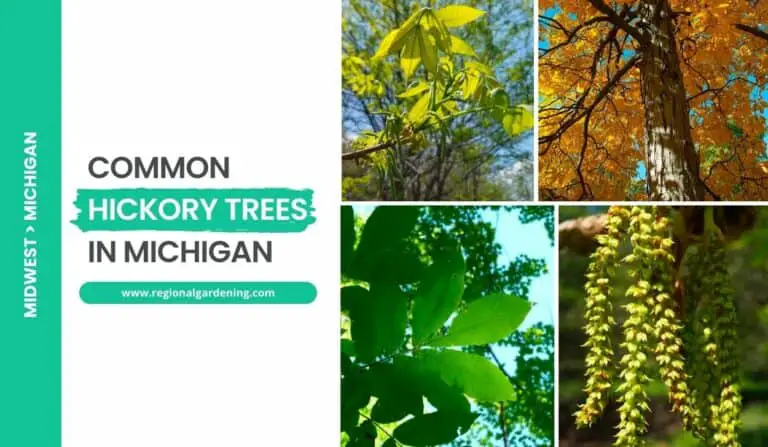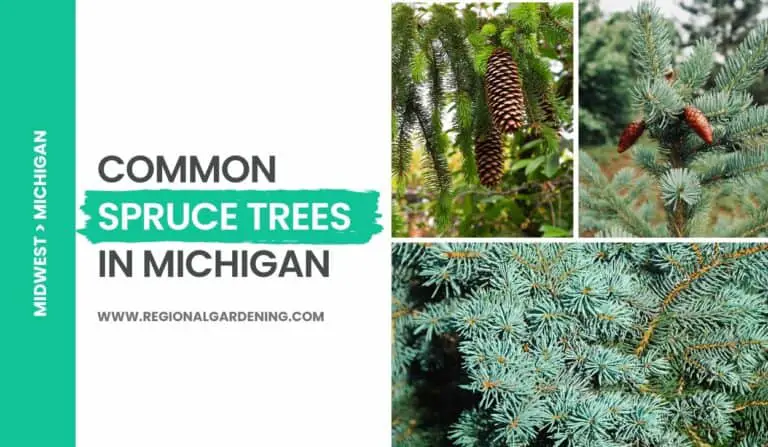3 Common Locust Trees In Ohio (Photos & Identification)
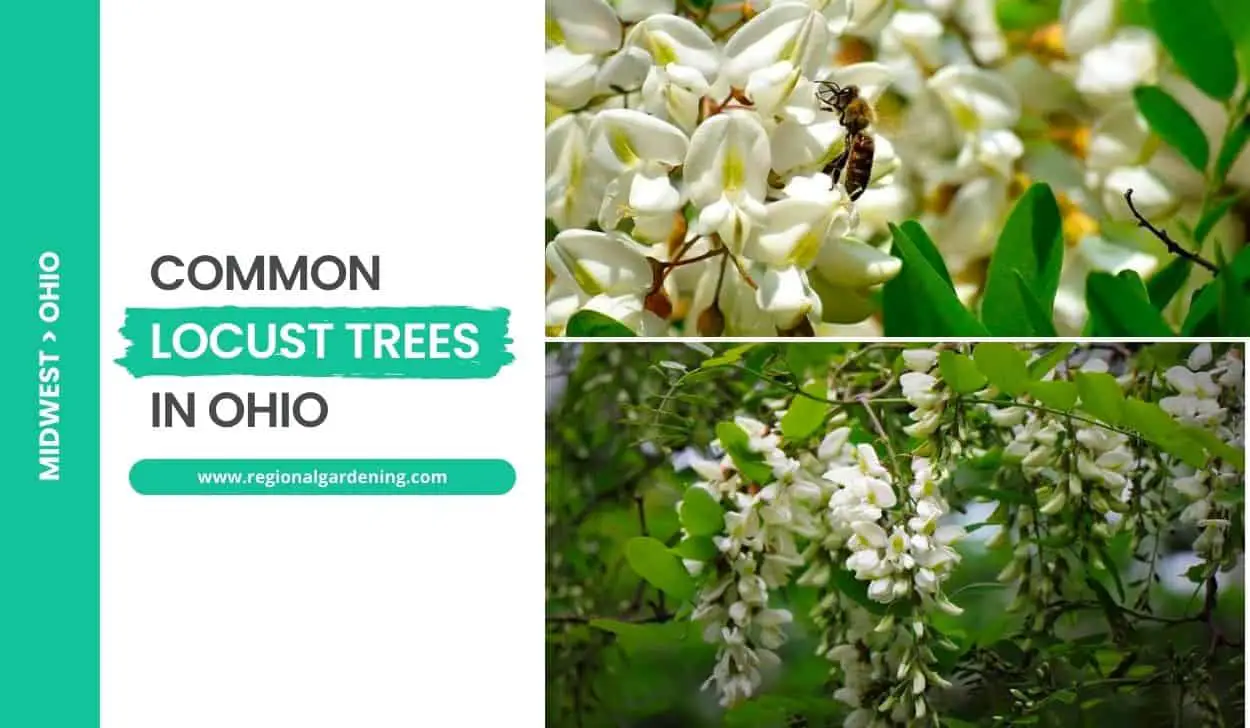
Every year, locust trees bring the landscapes in the middle of Ohio to life. With their distinct features and invaluable ecological contributions, these towering sentinels have earned their place as iconic fixtures of Ohio’s natural beauty.
In this article, we explore the fascinating world of locust trees in Ohio, the Buckeye State.
From the strong hold of the native Black Locust and Honey Locust to the captivating beauty of the non-native Bristly locust, each type of tree gives the Ohioan landscape its own special charm. As spring brings life back to the land, these locust trees burst forth in a symphony of colors and smells, giving shelter to animals and telling stories of strength to people who are paying attention.
So, let’s begin exploring the native and non-native locust trees in Ohio one by one.
1. Black Locust
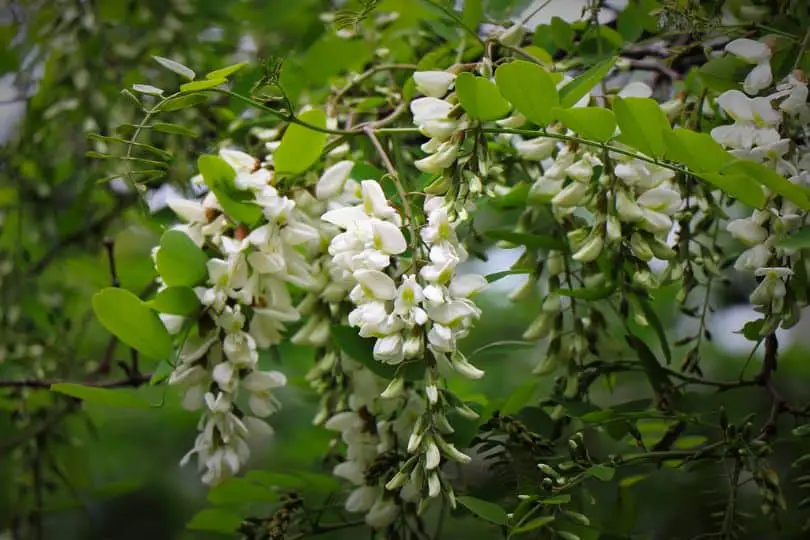
- Scientific Name: Robinia pseudoacacia
- Common Name(s): Black Locust
- Mature Height: 30–50′ (9–15 m)
- Native Region: North America
- Flowers: Pea-like white flowers with a yellow center, fragrant, appearing soon after leaves develop, in hanging clusters, ½–1″ (1–2.5 cm) wide, 2–4″ (5–10 cm) long
- Fruit: Green pod turning brown when mature, flat, 2–4″ (5–10 cm) long, containing 4–8 seeds
- Uses: Black Locust is valued for its strong wood, which was historically used to build ships. It is also planted for erosion control and windbreaks. The flowers attract bees, and the tree is sometimes planted for honey production. Additionally, the bark and leaves can be used in traditional medicine.
The Black Locust, scientifically known as Robinia pseudoacacia, is one of the most commonly found native locust trees in Ohio. It is a medium-sized North American tree that can reach a height of 30-50 feet (9-15 meters) and has an erect and spreading branch structure, giving it an open uneven crown. The tree has a crooked stem and yellowish-green compound leaves with 7-19 oval to round leaflets varying in length from 1-2 inches (2.5-5 cm).
The bark of the Black Locust begins smooth and dark brown, but becomes wrinkled and scaly as the tree becomes older. Young trees frequently have pairs of robust thorns running along their branches and twigs. The tree produces pea-like white flowers with a golden core. These fragrant blooms appear shortly after the leaves and are grouped in clusters. The Black Locust develops green pods that grow to brown and carry 4-8 seeds.
Black Locust grows in a variety of soil types and can be found in damp woodlands. It is known to be shade sensitive. It is mostly found near Ohio’s southern border and is often planted along highways, in parks, and around homes. The tree is valued for its longevity since its wood is extremely robust. In reality, during the War of 1812, Black Locust lumber was utilized to construct ships, with the British attributing the success of the US naval fleet to the wood’s strength.
Because of its spreading branch structure, Black Locust is often planted for erosion control and windbreaks in addition to its building purposes. The tree’s aromatic blossoms attract bees and aid in honey production. Furthermore, the bark and leaves of the Black Locust have long been employed in herbal and folk medicine. It should be noted, however, that the Black Locust is vulnerable to infection by Locust Borer beetles, which burrow into the trunks.
2. Bristly Locust
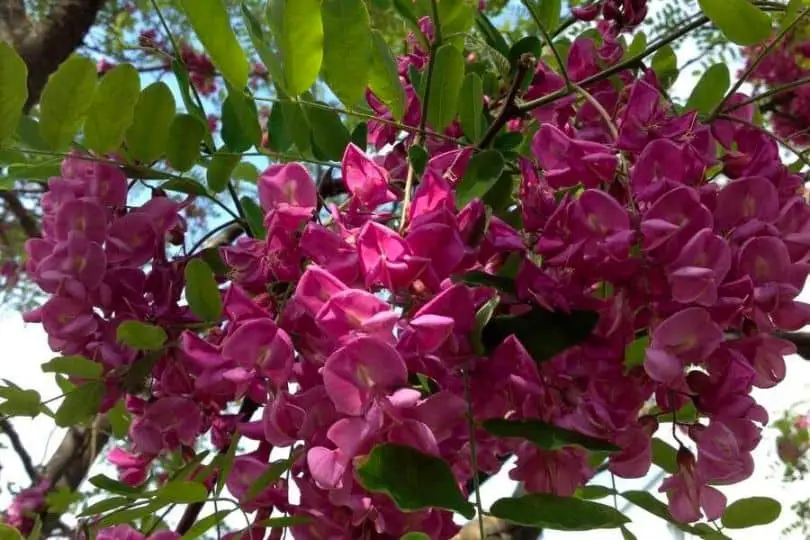
- Scientific Name: Robinia hispida
- Common Name(s): Bristly Locust, Rose Acacia
- Mature Height: 6-10 feet (1.8-3 meters)
- Native Region: Eastern United States
- Flowers: Pink or purple pea-like flowers in clusters
- Fruit: Pod-like fruits with seeds inside
- Uses: Often used as an ornamental shrub, attracts pollinators like bees and butterflies
The Bristly Locust, scientifically known as Robinia hispida, is one of the shortest locust trees in Ohio. It is considered as a shrub by many botanists and plant experts. This plant has a spreading habit and grows to a height of 6 to 10 feet (1.8 to 3 meters). The leaves have 5 to 11 leaflets and are pinnately complex, giving it a feathery appearance.
The Bristly Locust is a native of the eastern United States that has adapted well to the Ohio environment. It prefers well-drained soil and thrives in full sun to light shade. This plant is well-known for its capacity to grow in a variety of soil conditions, including sandy and rocky soils.
The Bristly Locust blooms in late spring or early summer, with clusters of stunning pink or purple pea-like flowers. These flowers attract pollinators like bees and butterflies, making them an important component of pollinator gardens. After the blossoms, the shrub produces short, flattened, pod-like fruits containing seeds.
Because of its lovely flowers and foliage, the Bristly Locust is frequently utilized as an ornamental shrub in Ohio landscaping. It can be grown as a specimen plant, in groups, or as a hedge. This shrub is recognized for being low-maintenance and resistant to pests and diseases. It may, however, benefit from frequent pruning to keep its shape and remove any dead or broken branches.
3. Honey Locust
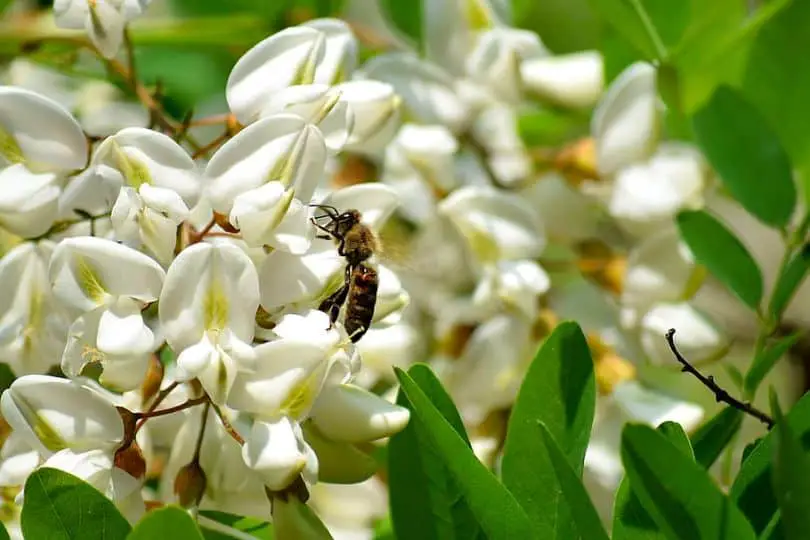
- Scientific Name: Gleditsia triacanthos
- Common Name(s): Honey Locust, Thorny Locust
- Mature Height: 40–60′ (12–18 m)
- Native Region: North America
- Flowers: Small green catkin, 1–2″ (2.5–5 cm) long
- Fruit: Large pea-like purplish-brown pod, flat, twisted, 6–16″ (15–40 cm) long, 12–14 oval seeds per pod
- Uses: Honey Locust is commonly planted in parks, yards, and along roads for its ornamental value. Thornless and seedless varieties are preferred for landscaping purposes.
The Honey Locust, scientifically known as Gleditsia triacanthos, is a deciduous tree in the Fabaceae (Pea or Bean) family. It is also known as the Honey Locust or the Thorny Locust. The mature height of this tree ranges from 40 to 60 feet (12 to 18 meters), and it has a single trunk that is often divided low, with an open broad and sometimes flat-topped crown.
Honey Locust leaves are doubly complex and measure 12 to 24 inches (30 to 60 cm) in length. They have 14 to 30 oval, feathery leaflets that are connected alternately. Each leaflet is about 1 inch (2.5 cm) long and has a finely serrated edge. The leaf’s upper side is dark green, while the lower side is yellow-green. The tree’s bark is reddish-brown and coated in gray horizontal lines known as lenticels. It is prone to cracking and peeling, and the trunk and branches can be prickly.
The Honey Locust reproduces by producing little green catkins that measure 1 to 2 inches (2.5 to 5 cm) in length. The tree produces enormous, flat, twisted pods that look like peas. These pods can be 6 to 16 inches (15 to 40 cm) long and contain 12 to 14 oval seeds each. The Honey Locust has gorgeous yellow foliage in the fall.
The Honey Locust is native to North America and can be found all throughout the continent. It grows best in moist or rich soils in full sun. For its ornamental appeal, the tree is often planted in parks, yards, and along highways in Ohio. It is well-known for having huge thorns, particularly on the trunk and branches. However, several popular landscaping types are free of thorns and fruit.
For care suggestions particular to Ohio settings, avoid pruning the Honey Locust during rainy weather as this can make the tree prone to Nectria canker infestation. To prevent illness, regular maintenance such as cutting dead or crowded branches should be performed during dry months. Watering the tree during dry spells is recommended to guarantee optimal growth.
The Honey Locust is popular among Ohio residents for its visual attractiveness in parks and landscapes. Thornless and seedless cultivars are especially popular due to their simplicity of care and safety. Furthermore, wildlife consumes the enormous seedpods of the Honey Locust, bringing ecological benefits to the tree.
Similar Articles
- White Flowering Trees In Ohio
- Yellow Flowering Trees In Ohio
- Common Oak Trees In Ohio
- Common Willow Trees In Ohio
- Common Purple Trees In Ohio
- Common Pine Trees In Ohio
- Common Birch Trees In Ohio
- Common Ash Trees In Ohio
- Native Cherry Trees In Ohio
- Native Hickory Trees In Ohio
- Common Elm Trees In Ohio
- Common Spruce Trees In Ohio
- Common Poplar Trees In Ohio
- Common Nut Trees In Ohio
- Common Cedar Trees In Ohio
- Common Maple Trees In Ohio
- Native Plum Trees In Ohio
- Native Aspen Trees In Ohio
- Common Palm Trees In Ohio
Common Locust Trees In Ohio – Sources
The Regional Gardening team makes sure that the information in our articles is accurate by only using sources that are known to be trustworthy. Some of these sources are peer-reviewed journals from government agencies, well-known universities, and scientific research organizations.
- Trees Of Ohio, Division Of Wildlife
- Trees Of Ohio Field Guide, Book by Stan Tekiela
- Ohio Trees, OSU Extension Publications
- Native Plant Lists, Ohio Department Of Natural Resources
- Ohio Department Of Agriculture
- Gardening, The Ohio State University


